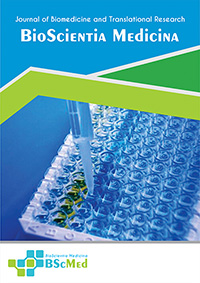Main Article Content
Abstract
Background: Pneumonia remains a significant cause of morbidity and mortality worldwide, with sepsis being a severe complication. Early identification of sepsis is crucial for prompt treatment and improved outcomes. This study aimed to evaluate the performance of procalcitonin (PCT) and neutrophil-lymphocyte ratio (NLR) as predictors of sepsis in pneumonia patients at a tertiary hospital in Padang, Indonesia.
Methods: A cross-sectional study was conducted on 110 adult pneumonia patients admitted to Dr. M. Djamil General Hospital Padang between 2022 and 2023. Data on demographics, clinical characteristics, NLR, and PCT levels were collected from electronic medical records. Sepsis was defined according to established clinical criteria. Receiver operating characteristic (ROC) curve analysis was performed to assess the diagnostic accuracy of NLR and PCT in predicting sepsis.
Results: The study population had a mean age of 57.72 ± 14.41 years, with 56.4% being male. Of the 110 patients, 73.6% had community-acquired pneumonia (CAP) and 26.4% had hospital-acquired pneumonia (HAP). Sepsis was present in 55.5% of the patients. The median NLR and PCT levels were significantly higher in the sepsis group compared to the non-sepsis group (NLR: 14 vs. 6.6, p=0.002; PCT: 2.17 vs. 0.24, p=0.000). ROC analysis showed that PCT had a higher area under the curve (AUC) compared to NLR (0.724 vs. 0.676), indicating better diagnostic accuracy. The optimal cut-off point for PCT was 0.455, with a sensitivity of 65.6% and specificity of 65.3%. For NLR, the cut-off point was 10.375, with a sensitivity of 63.9% and specificity of 63.3%.
Conclusion: PCT demonstrated superior diagnostic accuracy compared to NLR in predicting sepsis among pneumonia patients in this study. However, NLR remains a valuable tool, especially in resource-limited settings where PCT testing may not be readily available.
Keywords
Article Details
As our aim is to disseminate original research article, hence the publishing right is a necessary one. The publishing right is needed in order to reach the agreement between the author and publisher. As the journal is fully open access, the authors will sign an exclusive license agreement.
The authors have the right to:
- Share their article in the same ways permitted to third parties under the relevant user license.
- Retain copyright, patent, trademark and other intellectual property rights including research data.
- Proper attribution and credit for the published work.
For the open access article, the publisher is granted to the following right.
- The non-exclusive right to publish the article and grant right to others.
- For the published article, the publisher applied for the Creative Commons Attribution-NonCommercial-ShareAlike 4.0 International License.





